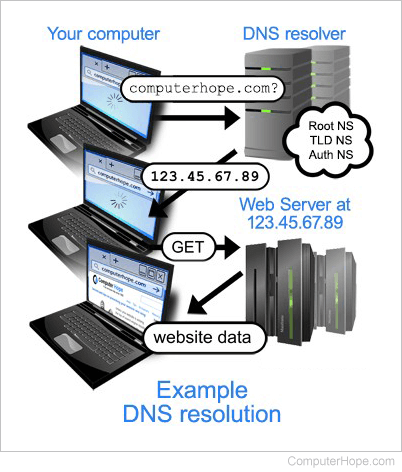Communications
Communications is the exchange of information between two or more things, such as people, devices, governments, organizations, or businesses. In digital communication, data is exchanged between two or more computing devices. This data communication (datacom) occurs over a communication medium, such as a telephone line, fiber optic cable, or wireless radio signal. The collection of digital devices and their connection media is a computer network and is what allows devices to "talk" to each other. Below is an example of the communication your computer makes with DNS (domain name system) to resolve a domain name into an IP address.

Examples of digital communications
The following are examples of digital communications:
- Transferring data from one computer to another over a network. With this form of communication, data transmits as a packet over a network connection from a sender to a receiver using a protocol.
- Sending text messages between mobile devices.
- Sending and receiving an e-mail.
- Collaborating on shared documents and spreadsheets.
- Voice chat or calls with other people over the Internet, using VoIP (Voice over Internet Protocol) software.
- Video call or conferencing with other people over the Internet, using VoIP software.
How is data communication different than telecommunications?
With data communications, only data is transmitted. However, with telecommunications, there is a mix of both data (digital) and voice (analog). For example, when using a dial-up modem to connect to another computer, say, using BBS (bulletin board system) and share data, the modem uses a landline to communicate digital data using an analog signal.
